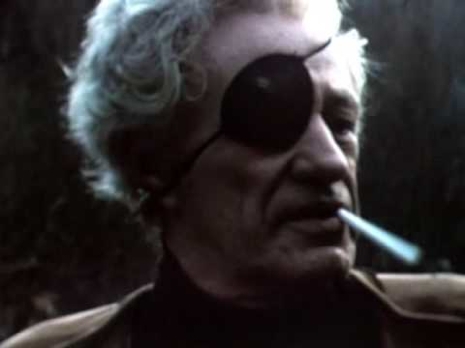
After Rebel Without a Cause, my next exposure to director Nicholas Ray probably came through Lightning Over Water, Wim Wenders’ incredibly moving documentary on Ray’s last days before succumbing to lung cancer.
Then came Johnny Guitar, On Dangerous Ground, and, most recently, Criterion‘s bang-up resissuing of 1956’s Bigger Than Life. James Mason plays a milquetoast school teacher, who, thanks to the “miracle drug” Cortisone, releases with near-tragic consequences his inner Übermensch. You can watch a great, Mason-hosted trailer for the film here.
If you haven’t seen Bigger Than Life, please do—it remains one of the more scathing critiques of the “American Dream” ever committed to film.
After dying 31 years ago this month, Nicholas Ray popped up again in yesterday’s NYT. During the years preceding his death, Ray devoted himself to his experimental film, We Can’t Go Home Again.
Made in collaboration with his college students at the time, segments of the film pop up in Lightning Over Water, but now Ray’s widow, Susan, in honor of what would have been her husband’s 100 birthday, is assembling a full print of We Can’t Go Home Again for next year’s Venice Film Festival:
“It was an experimental film, a difficult film and I think a visionary film that is particularly important today,” Ms. Ray said from her home in Saugerties, N.Y., where she has also been organizing the storehouse of original scripts, notes and movie storyboards for a sale. Ray worked on the project from 1972 to 1976 with students he taught at Harpur College at the State University of New York at Binghamton. An early version was screened at the Cannes Film Festival in 1973, but Ray continued to revise, reshoot and re-edit it until his death. The film employs what Ray called “mimage” (short for multiple image), in which a number of camera images are simultaneously projected on the screen.
In certain respects his ideas were ahead of their time. On screen Ray and the students play versions of themselves, a conceit that smoothly fits into this era of reality television. Today’s digital techniques would also make it easy to create the effects Ray painstakingly tried to achieve on a shoestring budget. Ray and his students, for example, used Super 8 millimeter and 16 millimeter formats and early video technology, projected the images onto a screen and then refilmed these multiple images using a 35 millimeter camera.
Jean-Luc Godard famously called Ray, “the camera,” and for a man whose conflicts—bisexuality, drug and alcohol abuse—always seemed on the verge of overwhelming his talents, it’s not surprising the director’s life was the subject of more than one documentary.
What follows is another look at Ray, ‘74’s I’m a Stranger Here Myself. Directed by David Helpern Jr. and James C. Gutman, the doc covers Ray’s Harpur College teaching years, and features several sequences of Ray working on We Can’t Go Home Again. Remaining parts follow at the bottom.
In light of Dennis Hopper’s recent passing, it’s also definitely worthwhile checking out Wenders’ The American Friend. Hopper plays Patricia Highsmith’s Ripley, and Ray, in the opening scene, contributes a small but impactful cameo as a painter who’s faked his own death. That scene, restaged with a frail and sickly Ray, opens Lightning Over Water.
I’m a Stranger Here Myself, Part II, III, IV, V, VI
Reclaiming Causes of a Filmmaking Rebel